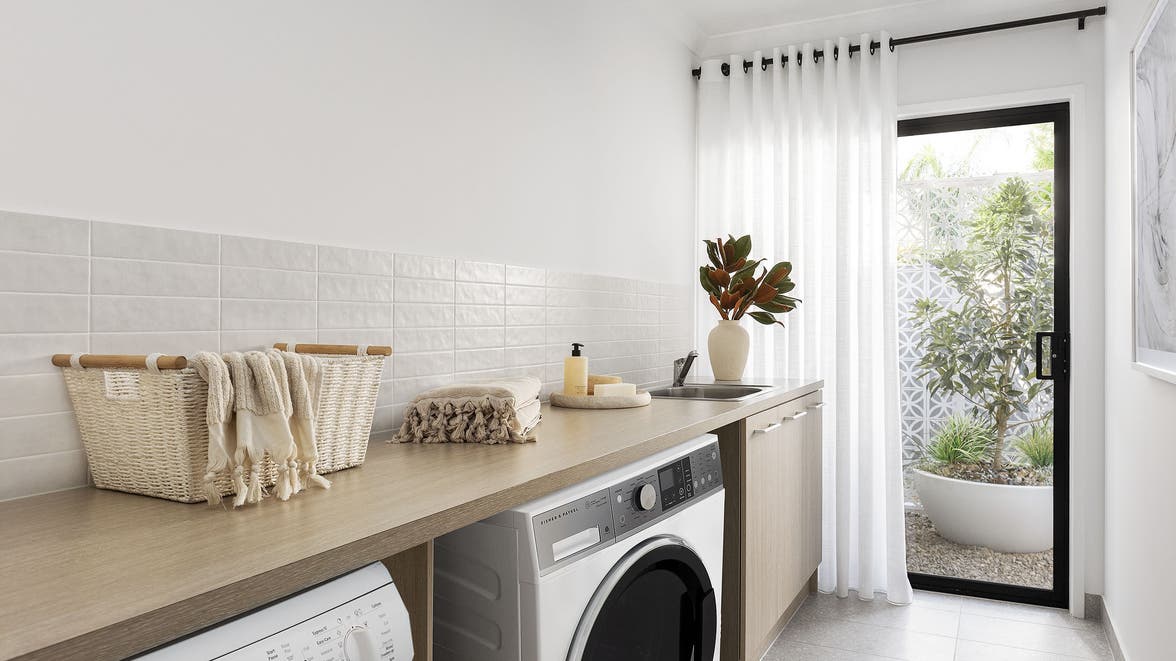Laundry areas are functional and practical by nature - an undertaking that can be achieved with proper planning and design. Remember, this is where you wash your garments, linen, and all the basic clothing you need. How you ultimately design the laundry area will impact the efficacy of your washing workflow. There’s more thought that needs to go into a laundry design than one might expect!
Laundry design 101: What do you need?
Location
The location lays the groundwork for your laundry design. If you’re building a spacious home, make sure the laundry is away from bedrooms and living areas. Rooms designed for resting and entertainment should ideally be far away from the boisterous drum spins of your washing machine. Think near the garage or an entrance from the kitchen or butler’s pantry.
Smaller homes tend to adopt European laundries - a laundry hidden away in a cupboard usually in kitchens or bathrooms (or any unused space from any part in your house). Constructing it this way saves space without sacrificing functionality. Fortunately, Australian houses are amongst the biggest in the world and would have space for a separate laundry room.
Layout and size
If you’re building a home, it makes sense to think of the laundry layout and size before purchasing appliances and storage equipment. This should give you an estimate of what can or cannot be done. Your design should give an allowance for tweaks here and there (mostly for appliances).
The process of doing your laundry can also be streamlined if you design according to your workflow.
Tried-and-tested layout techniques abound to make the job less laborious and maybe even turn it into an exciting activity! Some people like to stack or elevate their appliances for ergonomic reasons to reduce bending or crouching.
In more spacious houses, the washing machine and dryer will sit next to each other below a benchtop with a trough above.
Appliances
Washing machine: front or top loader?
Top loaders usually have quicker cycles and larger capacities than a front loader. On the other hand, a front loader has faster spin speeds for drying and makes fewer noises than a top loader. More importantly, front loaders are more cost, energy, and water-savvy in the long-run.
If your layout suggests that you need to stack your dryer on top of your washing machine, then the top loader won’t be an option for you.
Storage
Storage is underrated but a highly important component of laundries. Combining overheads, drawers, shelves, cupboards, and benchtop space allow you to make the most out of your laundry area.
Overheads can store chemicals and detergent in the overheads to keep them away from children.
Drawers, cupboards, and shelves can accommodate your linen and other things in the house you need the extra storage for. You can use tall cabinets to fit your brooms, vacuum, and other cleaning materials in as well. More recently, pullout baskets that save people from bringing their dirty laundry over - place it in a drawer tucked away where no one can see them!
There is no clear-cut way of designing your laundry. It all comes down to the style of your house, whether you’re in the pre-handover, post-handover, or renovation stage.
Don’t forget to add your personal touch to it - pop in a plant, a marble soap dish, posters, or even signboards!
Always remember to take into account the location, layout, size, appliances, and storage when putting your laundry area together. It’s where you keep your clothing clean - take ownership and turn it into a room that makes doing your laundry less like a chore.

